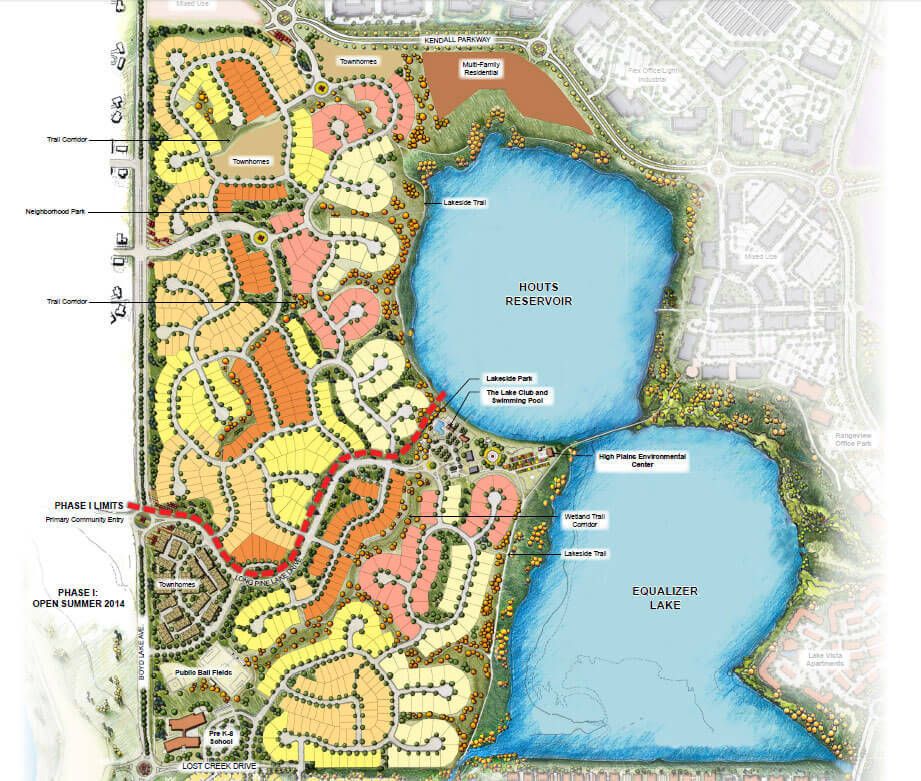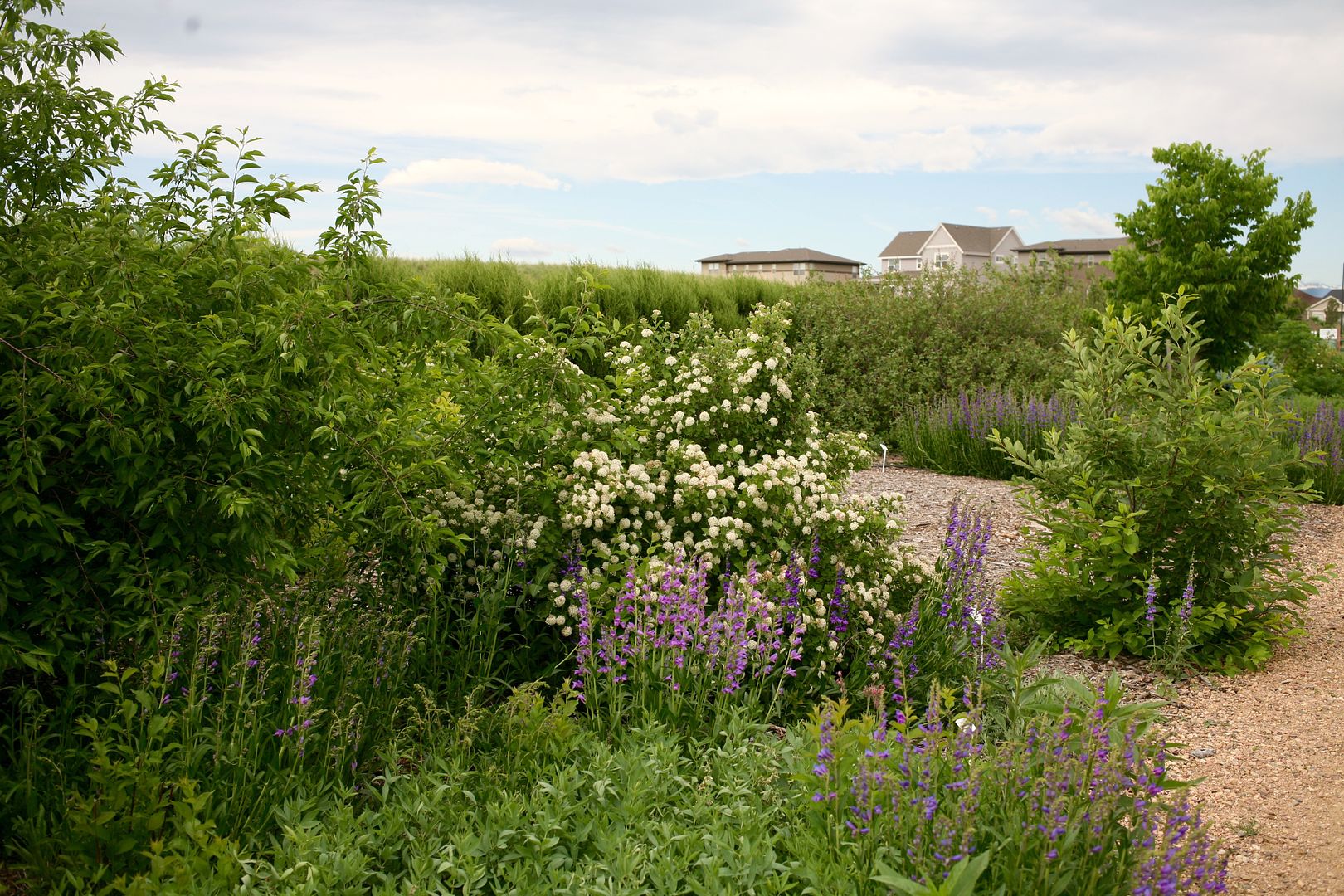“Formed in 2001, HPEC has grown into a multifaceted organization that works to create sustainable landscapes, restore native plant communities and provide habitats for birds, butterflies, and other wildlife amid development.”

Back in June a bunch of garden bloggers visited a place in Loveland, Colorado that embodies so many principles commonly held to be diametrically opposed that I’m still trying to understand how it all fits together. Profit/nonprofit, housing/open space, development/habitat restoration, private/community — The High Plains Environmental Center chooses to ignore these binary boundaries and looks for on-the-ground solutions so that human pursuits (housing, businesses, schools) and wildlife habitat can gently occupy the same land. It is an intriguing idea that has been put into practice in the 3,000-acre Lakes at Centerra mixed-use community. It’s an ambitious, master-planned community on former farmland that integrates housing among the habitats of countless plant and wildlife species (suburbitat!)

“Community Gone Wild — The Lakes is home to a non-profit organization — the High Plains Environmental Center — dedicated to the idea that backyards, schoolyards, office environments, community gardens, parkland and other community spaces can become habitat for native wildlife. And since almost 150 different species of birds, mammals, reptiles and fish have been observed at The Lakes, it seems the experiment is working. In fact, The Lakes is the only place in Colorado designated by the National Wildlife Federation as a Certified Community Wildlife Habitat.” (HPEC takes up roughly 76 acres on the site, not including 3 miles of trails and the man-made lakes.)

We met at the HPEC Visitor Center, near the native plant nursery, orchard, and community garden, but after a long bus ride I felt like a walk so struck off for the nearby neighborhood nestled into short-grass prairie and wetlands. (While checking out the display gardens at the Visitor Center, I saw my first kestrel — North America’s smallest raptor. The bird life here is phenomenal.)

This is a challenging climate for native plant restoration work, averaging 16 inches of rain per year. (Snowfall averages about 46 inches a year.) Technically, habitat and ecosystem engineering seems more apt than “restoration,” because what was here when the project started back in 2004 was weedy agricultural land. While developing the site, non-native plants slipped in here and there, but in 2008 all the non-native plants were removed. Some of the newly chosen western native plants may have never grown in this particular stretch of Colorado but are “locally collected ecotypes that are particularly valuable for restoration projects.” What HPEC feels it is building here is a “botanic garden of the wild.”








I had a million questions after exploring, which a young docent pursuing environmental studies helped to answer. And back at the Visitor Center, the site of so many school field trips, Jim Tolstrup, executive director of HPEC, presented the full High Plains Environmental Center Story, which you can read here. It is a fascinating story of the work being done at this habitat laboratory, a “botanic garden of the wild” that aims big, partnering with businesses by incorporating horticulture, land management, urban studies, conservation, nature-based learning to address habitat loss…seed by seed, problem-solving a way forward in confronting some of the biggest issues of our time. Because HPEC knows avoidance just isn’t a strategy.

Oh, now I really envy you for doing exactly what I wanted to! I wasn’t sure if we were allowed to wander out into the community. I was really curious to know how people in the community were gardening. Thanks so much for sharing your photos.
An impressive development on so many levels. I’m not sure the plant collector in me would be happy in a habitat like that but I expect my MIL would have moved there in a second.
I’ve been sold on creating and connecting wildlife corridors since reading Sara Stein in 1995. If someone’s found a way for developments to incorporate habitats while funding their care, hats off.
Fun to imagine a similar project in this ecosystem. It would have more trees. Actually, a vaguely similar development, on a much smaller scale, was built here on an old farm — preserving the farm ponds and adding more. It opened just before the crash, so is still pretty sparsely inhabited by people. The network of ponds and native shrubs and trees has attracted a rich array of birds over the last decade, though.
That is so cool that you got off the bus, walked a little bit, and saw a kestrel.
@Alison, I saw a few other bloggers out there with me!
@Kris, when I see all the front gardens that haven’t changed since move-in/20 years there seems to be lots of people who would be up for this. The plant collectors are a definite minority!
@Nell, I heard comments that some of the residents ask questions like, When is the grass going to get mowed? so there’s definitely a learning curve, and not everybody moves in fully understanding what they’re in for. And the houses seem huge! But overall it’s big step in the right direction.
The houses do seem huge, so much so that I wonder if some of them aren’t apartments or townhouses. It’s not easy to match up the map with the photos, but the map does project some non-single-family housing.
Your blog post helped me understand this place much better than anything I read or heard while we were there. Thank you!
That’s a step in the right direction! If there is not room for wildlife, there will be no wildlife. Looks interesting, but houses seem too close together for comfort.
The push from the opposite direction is unfortunately going on in SoCal–the new Governor is demanding each city have a plan to create more and more housing. Keep cramming them in.
I did a bit of wandering as well, and I also wandered on Zillow-I was curious about the home prices. If one finds prices between 300 and 450k affordable , then it is that. Low property taxes too, compared to mine. I really admire this community and hope that the model is copied elsewhere.